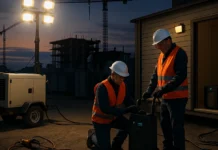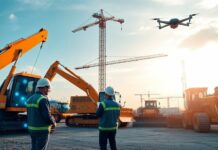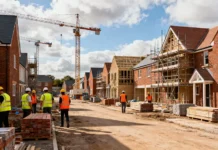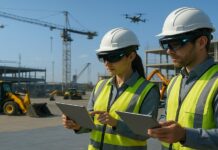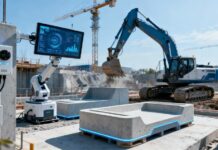The construction industry is undergoing a significant transformation, driven by the urgent need for sustainable solutions and technological innovation. One of the most promising trends is the growth of electric construction equipment, which is set to reshape the way infrastructure projects are carried out worldwide. As environmental protection laws become more stringent and businesses increasingly focus on energy efficiency and carbon reduction, the market for electric construction equipment is booming.
Industry Overview and Market Drivers
The global electric construction equipment market has been expanding at a robust pace. Numerous factors are propelling the industry forward, including the increasing adoption of green building strategies, tighter emissions regulations, and the emerging technologies related to batteries and electric motors. Governments and regulatory agencies are helping to accelerate the transition internationally by encouraging the adoption of low-emission equipment through incentives and taxing traditional diesel powered machines.
In addition, the increasing labor expense and shortage of experienced operators are compelling contractors to invest in automation and electrification as productivity and safety improvement options on site. The global electric construction equipment market is projected to reach $58,215.7 Million by 2032. Forecasts suggest that the market is expected to continue growing at 15.5% CAGR and likely be valued in the multi-billions by the end of the forecast period from 2025-2032.
Product Segmentation and Market Dynamics
The electric construction equipment market is segmented by product types including excavators, loaders, forklifts, aerial work platforms (AWP), and other specialized equipment. Of these, excavators and loaders are presently leading the market due to their wide applications in earthmoving, material handling, and infrastructure development projects.
Excavators, especially mini and midi units, are popular in city construction due to their versatility and ease of compatibility with electric drive systems. Loaders, used extensively in site preparation and the transportation of material, are also seeing electric models in fast uptake.
Air work platforms (AWP), such as boom lifts and scissor lifts, are more and more electric motor powered because they have the requirement to work in tight or indoor spaces where emissions need to be less.
Market Data and Trends
One of the maximum sizable trends in this transition is the product segmentation. Among electric creation equipment, excavators keep a primary proportion, valued at $1,173.5 million, showing clean symptoms of management on this movement. Other commodities in this space include loaders, forklifts, aerial paintings structures (AWP), and many others which may be slowly building pace as infrastructure desires swell and urban work increases.
Propulsion Technologies: Hybrid and Battery Electric
The propulsion sector is classified by hybrid-electric or battery electric systems. Hybrid-electric equipment is made up of internal combustion engines and electric motor systems, providing an intermediate product that allows more operating hours at greatly reduced emissions. Battery-electric equipment uses batteries alone and provides zero emissions in operations and generally less maintenance.
Increasingly, the market is favoring battery-electric options as the trend worsens across urban and in-door applications where air quality and noise suppression is a priority. The significant advancements in lithium-ion batteries are pushing things forward, especially regarding energy density and charging rates.
Market Projections
Battery electric propulsion is set to overtake the market by 2032, dominating with the majority share thanks to environmental benefits and declining battery costs. Hybrid technology will still see use in niche applications where operators need longer operating hours without recharging too often.
Battery Capacity and Types
Battery capacity is the critical measure of operational efficiency for electric construction equipment. The market can be segmented based on capacities: less than 50 kWh, 50-200 kWh, and over 200 kWh. Smaller batteries – less than 50 kWh range – are primarily utilized on compact machines and indoor equipment. TBatteries in the mid-sized (50-200 kWh) category power medium-sized equipment and are designed to provide a balance of duration and weight. Batteries that provide large capacities (>200 kWh) are available to high energy demanding equipment, such as heavy machinery, requiring long run times.
Currently, Lithium-ion batteries are the most prevalent technology choice due to their ability to deliver higher energy density and longevity in use. Batteries such as lead-acid batteries still exist due to brands using them in less demanding applications.
Market Data and Trends
The market segment over 200 kWh will be the fastest growing segment due to the demand for heavy construction equipment with long run times between charging. Lithium-ion will remain the most chosen battery type with continued advances in technology and decreasing cost.
Regional Outlook
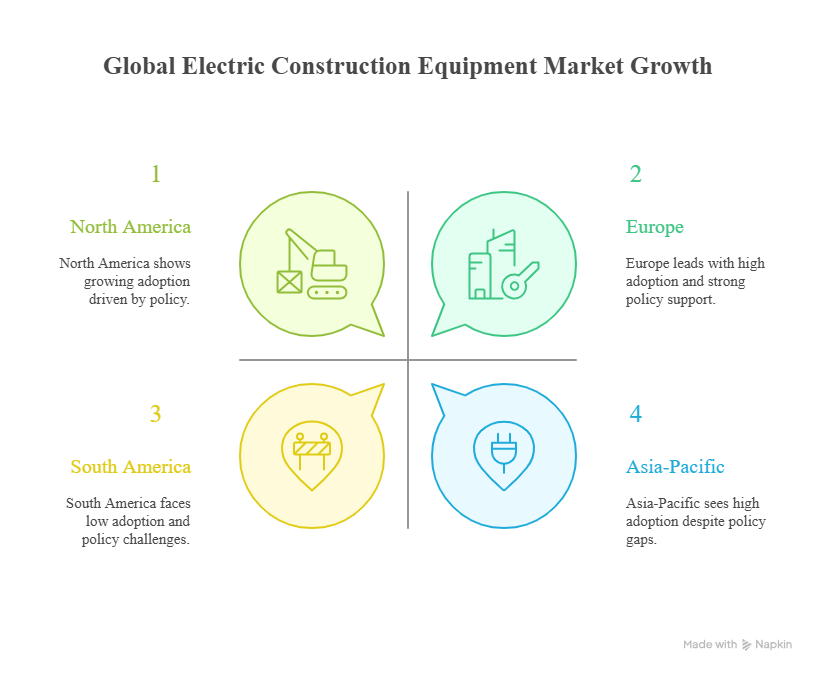
The global electric construction equipment market is experiencing lifting growth in all geographic regions, but to varying degrees due to local adoption rates influenced by regional policies and environmental initiatives. This regional variation identifies the need for customized strategies for players as well as investors seeking to tap opportunities across the world.
In North America, the United States, Canada, and Mexico included, the transition to cleaner construction technology is picking up much ground. Industry operators and governments are spending heavily on sustainable-priority infrastructure projects spurred by domestic commitment to minimizing carbon footprints. Leading the trend, the U.S. has witnessed more and more construction developments incorporating electric equipment as part of a wider trend toward greening. The projects are driven by strong capital expenditure budgets and regulatory commitments to meet emissions targets that are requiring the industry to electrify. Similarly with Canada’s focus on sustainable development and the increasing industrialization in Mexico, a market environment is created whereby electric machinery has become commonplace, especially in urban building and infrastructure industries.
Europe has been a mainstay of sustainable building practices for many decades. The UK, Germany, France, and Italy lead the way with programs and incentives to transition to electric construction machinery and by making the switch via support programs, tax breaks, and emissions standards. These countries are imposing stricter controls on diesel emissions, making electric alternatives more popular. Germany, with its engineering prowess, is becoming a center for creating sophisticated electric construction equipment. With growing awareness and tightening regulations on the continent, the rest of Europe also is moving faster toward adopting electric equipment, driven by a shared goal of sustainability and cleaner cityscapes.
Significant growth is likely to occur in the Asia-Pacific area, where electric construction equipment is skyrocketing, particularly in key countries such as India, China, Japan, and Korea. Urban growth is taking place in these countries at enormous rates and massive infrastructure projects are prompting the industry to find greener alternatives. In particular, countries like China and India are presenting immense opportunities for both local and global equipment manufacturers producing electric machinery. In contrast, along with Japan and South Korea, both situated in sophisticated environments with advanced technologies, these countries are forcing local producers to find ways to innovate to meet demand locally and globally for greener construction contracted solutions.
The growth occurring in South America is not moving as quickly, but it’s getting there when it comes to electric construction equipment. Mainly focused on Brazil and Argentina, the key markets where electric machinery usage is slowly being integrated into urban development projects primarily concerning large cities with excessive air pollution. The long-term cost savings and environmental benefits are attracting more cities and private businesses to consider electrification. However, affordability and infrastructure are significant barriers to widespread adoption across the region. The rest of South America is also seeing interest, but again, financial limitations and logistical concerns remain significant hurdles to swift growth.
Interest continues to grow in the use of electric construction equipment in the Middle East and Africa, especially in the case of the GCC countries, which include wealthy nations such as the UAE and Saudi Arabia. Large sums of money are being spent on developing smart cities and new infrastructure in both countries, which would indicate a demand for cleaner construction solutions that don’t contribute as much noise. Egypt and South Africa are moving forward with rapid urbanisation and a greater focus on sustainability in urban development.
Future Outlook and Market Projections
The electric construction equipment market is poised for robust growth, with forecasts indicating a compound annual growth rate (CAGR) of 15.5% during 2025-2032. At the end of that period, the market is expected to exceed $58,215.7 billion, which reflects the need for the construction industry to develop sustainably.
The sustained technological advancement in batteries, growth in charging infrastructure, and mounting regulatory pressures will continue to drive this rising trend. Companies are putting significant investments in R&D on creating more efficient, cost-effective, and reliable electric machinery, further driving industry growth.
Conclusion
The shift to electric equipment in construction can no longer be a question of if but when. The sector is experiencing a paradigm shift fueled by technological advancement, environmental necessity, and economic viability. The next several years will be critical in establishing the stage for widespread use with far-reaching implications for project efficiency, safety, and sustainability.
As the global construction industry aligns with these trends, stakeholders that focus on electrification and environmentally friendly practices will have a competitive advantage. The transformation of the industry towards wiser, greener, and more efficient equipment will ultimately serve the ultimate goal of creating a sustainable future.






